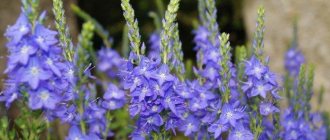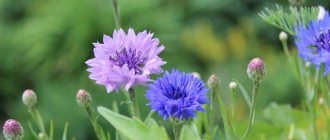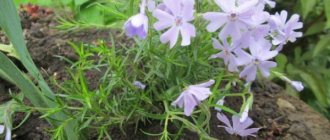The hero of today's article, the color amaranth, rarely appears in interiors, especially as a wall color. Which is completely false. After all, amaranth carries enormous potential - it is amazing and energetic. It is a color that adds a touch of extravagance to subdued spaces and a touch of luxury and artistic brilliance. How to use the color amaranth in the interior and what to combine it with?
general information
Amaranth is a herbaceous annual of the same family, native to South America. Many thousands of years ago, the Indians considered it the flower of immortality and brewed a miraculous drink from it. Amaranth grains are popular all over the world even now.
Amaranth inflorescences are sometimes called cock's comb or fox's tail for their characteristic shape and color. They are equally good at any time of the year, fresh or dry. A large panicle is collected from soft dense spikelets of burgundy, purple or yellow color. It is almost impossible to visually isolate individual flowers.
Amaranth blooms in early summer and continues to bloom until frost. It has large matte green or burgundy leaves with raised veins. Amaranth is a tall and dense plant up to 1.5, and sometimes up to 3 m.
Photo: 2sotki.ru
Links
- Amaranth color // Encyclopedic Dictionary of Brockhaus and Efron: in 86 volumes (82 volumes and 4 additional). - St. Petersburg, 1890-1907.
| Portal "Color" |
| This is a preliminary article about color. You can help the project by adding to it. |
| Shades of Gray | White Gray Black |
| HTML | black silver gray white red maroon purple fuchsia green lime olive yellow orange blue navy teal aqua |
| see also | Primary colors • Complementary colors • Spectral colors • Color model |
| Printer's Magenta | Maroon | Lilac, lilac | Red-violet | Rusty | Reddish brown | Sangria | Scarlet | |
| #FF00FF | #FF0090 | #800000 | #E0B0FF | #C71585 | #B7410E | #CC8899 | #92000A | #FF2400 |
| Terracotta | Cinnabar | Amaranth | Pink | Light cherry | Shocking pink | Coral | Pomegranate | Burgundy |
| #CC4E5C | #E34234 | #E52B50 | #FF007F | #FFCBDB | #FC0FC0 | #FF4040 | #F34723 | #B00000 |
Types of amaranth
There are many types of amaranth, and they are grown for completely different purposes. There are forage, vegetable and ornamental crops, and there are also ordinary wild weeds.
Vegetable amaranth
This species quickly and actively grows abundant foliage. It is edible along with shoots and grains. Vegetable amaranth is considered the most useful among its relatives.
Photo: kartoska.ru
Yellow amaranth
A compact decorative variety with a height of only 70 cm. One bush can have leaf blades of different shades of green, orange, yellow and bronze. The inflorescences are also yellow.
Photo: floweryvale.ru
Tricolor amaranth
This amazing species belongs to the decorative deciduous species. Each leaf is painted in several colors at once - green, yellow-orange and crimson. Its inflorescences are also large, bright yellow-red.
Photo: kartoska.ru
Tailed amaranth
A beautiful ornamental annual with large pendulous clusters that last until October. The varieties whose shoots are purple are very impressive.
Photo: 2sotki.ru
Dark amaranth
A tall, low-branching species up to 1.5 m tall with decorative erect inflorescences. Both the flowers and pointed leaves have a striking purple hue.
Photo: amaranth-ukr.com.ua
Upturned amaranth
This more compact and less branched species reaches an average height of 1 m. It has green inflorescences, a very powerful tap root, fleecy shoots and large ovoid leaves up to 14 cm in length.
Photo: 2sotki.ru
Paniculate amaranth
It is simply red, with red elongated inflorescences, which can be straight or drooping. It has very powerful, strong shoots up to 1.5 m tall.
Photo: zen.yandex.ru
Monarda (50 photos): types, planting and care in open ground
Amaranth color in the interior - what to combine with?
The color of amaranth fits perfectly into modern interiors. It creates a not entirely obvious look of minimalism, emphasizes the sophistication of the glamor style, gives a romantic touch to shabby chic and fits perfectly into the crazy ethnic style. What colors go well with amaranth? So, let's figure out how and with what colors and shades amaranth harmonizes well in the interior:
First of all, let's turn our attention to neutral interiors, which will help to tame amaranth and give it a more cozy character. Amaranth and white . Classic white is ideal for this role. Together with amaranth, they will look great in romantic and minimalist interiors.
Amaranth and grey. Gray is also not bad - amaranth will contrast with it to a lesser extent than white. However, the composition with it will have a tasty, luxurious character.
Amaranth and tree . Also, the color of amaranth will look great next to natural wood - light floors, tables and chairs.
Am arant and green . Against the background of an amaranth-colored wall, it is worth placing plants with large green leaves. They will refresh the interior and give it a slightly exotic, sensual character.
Amaranth and black . The combination of amaranth and black will give a dramatic, expressive effect. It's hard to go past such strongly contrasting colors! Black cabinets or black glossy countertops in the attic with an amaranth wall will be an original solution, contrary to our habits.
Amaranth care
The correct choice of soil is one of the main conditions for keeping amaranth. Otherwise, it causes no more problems than any other garden annual!
Temperature and lighting
Amaranth is very unpretentious and can withstand almost any temperature. As a southern resident, he was accustomed to the heat and scorching rays of the sun. But the culture adapts well to cold snaps down to 0 degrees.
Photo: vk.com
Watering
Mature amaranth does not need additional watering at normal times. Water it only when the soil dries out, if the rainless season has been prolonged. But young plants, especially during the rooting period, need to be watered frequently and abundantly.
Photo: domashniecvety.ru
The soil
The soil should be moderately moist and not acidic, because this promotes the development of root rot. Choose areas with loose and nutritious soil, and add a little lime before planting.
Photo: etsy.com
Fertilizers and fertilizing
Amaranth is fed approximately 3-4 times in the evening, when the heat subsides. You can use an ordinary mullein solution, which is even better than mineral mixtures. Nitrogen fertilizers are applied for the first time when the seedlings grow to 20 cm. But reduce the recommended concentration by half.
Photo: flo.discus-club.ru
Calendula (50 photos): types, planting and care in open ground
Amaranth color
Shades of violet-red are called amaranth after the color of this plant. But you won’t be able to see them right away. While the amaranth tree is growing, it has a common light gray color with a brownish pith inside. The sapwood - the area immediately under the bark - is up to 6 centimeters thick and has a dark brown, almost bronze hue.
Once the amaranth is cut, its core changes to a vibrant eggplant color. Later, under the influence of ultraviolet light, it darkens. It turns dark brown with a deep purple tint, for which this breed is valued. To reduce the effect of radiation and leave the wood light purple, special impregnations and fixatives are used that prevent the penetration of UV rays.
Planting and propagation
Amaranth can be planted with seeds directly into the ground, starting at the end of April. Planting of seedlings is carried out earlier - at the end of March, and the seedlings in this case are transplanted into the garden in the second half of May.
Seeds are planted in furrows to a depth of 1.5 cm one at a time, with a distance of about 45 cm between rows and 10 cm between seeds. It is better to spend time on sowing once than to deal with planting seedlings later. The taproot rhizome does not like transplantation and unnecessary disturbances. Shoots appear within 1-1.5 weeks.
Seedlings are planted in containers according to the same principle and left in a warm, bright place. For watering, use a sprayer and maintain the temperature at 20-22 degrees. In a week, expect shoots. When the first leaves appear, remove the weakest seedlings and plant the rest in peat pots.
Photo: steklotorgopt.ru
A scattering of shades of red in numbers
| Terracotta #cc4e5c rgb(204,78,92) | Sanguine, sangria #92000a rgb(146,0,10) | Carmine #960018 rgb(150,0,24) |
Terracotta (from Italian terra - earth, clay and cotta - burnt) - ceramic products with a porous shard (usually red, brown, cream): facing slabs, architectural details, dishes, vases... Known since the Neolithic era. “The aspen boletuses delighted him with their terracotta-colored caps .” (“Two Lives”, 1950, Vladimir Germanovich Lidin).
Sanguine (from Latin sanguineus - blood red). 1) Pencils without rims, red-brown tones (made from kaolin and iron oxides). 2) Technique of drawing from life using sanguine. Known since the Renaissance. Sangria (from Spanish sangre - blood) is a Spanish low-alcohol drink based on red wine with the addition of pieces of fruit, sugar, as well as a small amount of brandy and dry liqueur.
Carmine is a red dye obtained from wingless female cochineals (cochineal mealybug is an insect from the order Hemiptera).
| Strawberry red #d53032 rgb(213,48,50) | Raspberry red #c41d34 rgb(196,29,52) | Cherry #911e42 rgb(145,30,66) |
“Through the frosty white mesh there is a crimson light .” (“White House”, 1914, Anna Andreevna Akhmatova).
| Scarlet, red #ff2400 rgb(255,36,0) | Burgundy #b00000 rgb(176,0,0) | Tomato red #a12312 rgb(161,35,18) |
Diseases and pests of amaranth
Most often, amaranth suffers from root rot, which leads to the rotting of adult plants and the fall of seedlings. This can be avoided by choosing the right site, maintaining distance between bushes and controlling humidity.
Fungal diseases that affect shoots and leaves are treated with fungicides. In addition, there are varieties with increased immunity - we advise you to pay attention to them.
The most common enemy of amaranth is the weevil and its larvae. They not only eat leaves and stems, but also contribute to the development of fungal diseases. Colonies of aphids also periodically settle in dense bushes. Inspect your plantings regularly and use insecticides as needed.
Photo: flickr.com
Statica (50 photos): types, care and planting in open ground
Amaranth in the interior (amaranth is a shade of purple)
The hero of today's article, the color amaranth, rarely appears in interiors, especially as a wall color. Which is completely false. After all, amaranth carries enormous potential - it is amazing and energetic. It is a color that adds a touch of extravagance to subdued spaces and a touch of luxury and artistic brilliance. How to use the color amaranth in the interior and what to combine it with?
Amaranth – photo
In our latitudes, amaranth is just gaining mass popularity, so, most likely, you have not seen it very often. In this case, be sure to take a look at our photo selection!
Photo: ecomne.ru
Photo: numerologyalexk.com
Photo: zen.yandex.ru
Photo: chudogryadka.mirtesen.ru
Photo: blog.leto-shop.ru
Photo: 2sotki.ru
Photo: serviceyards.com
Photo: artfile.ru
Photo: greeninhouse.ru
Photo: stiralkovich.ru
Photo: 2sotki.ru
Photo: gwallsbest.com
Photo: erpstat.ru
Photo: healthy-inform.ru
Photo: 2sotki.ru
Photo: plantorama.ru
Photo: dachadecor.ru
Photo: flo.discus-club.ru
Photo: na-dache.pro
Photo: 2sotki.ru
Photo: fi.pinterest.com
Photo: bober-medcentr.ru
Photo: sovocrim.ru
Photo: evgenyart.livejournal.com Photo: amaranth-health.com
Did you like the post? Subscribe to our channel in Yandex.Zen, it really helps us in our development!
Amaranth color in the interior - what to combine with?
The color of amaranth fits perfectly into modern interiors. It creates a not entirely obvious look of minimalism, emphasizes the sophistication of the glamor style, gives a romantic touch to shabby chic and fits perfectly into the crazy ethnic style. What colors go well with amaranth? So, let's figure out how and with what colors and shades amaranth harmonizes well in the interior:
First of all, let's turn our attention to neutral interiors, which will help to tame amaranth and give it a more cozy character. Amaranth and white . Classic white is ideal for this role. Together with amaranth, they will look great in romantic and minimalist interiors.
Amaranth and grey. Gray is also not bad - amaranth will contrast with it to a lesser extent than white. However, the composition with it will have a tasty, luxurious character.
Amaranth and tree . Also, the color of amaranth will look great next to natural wood - light floors, tables and chairs.
Am arant and green . Against the background of an amaranth-colored wall, it is worth placing plants with large green leaves. They will refresh the interior and give it a slightly exotic, sensual character.
Amaranth and black . The combination of amaranth and black will give a dramatic, expressive effect. It's hard to go past such strongly contrasting colors! Black cabinets or black glossy countertops in the attic with an amaranth wall will be an original solution, contrary to our habits.











